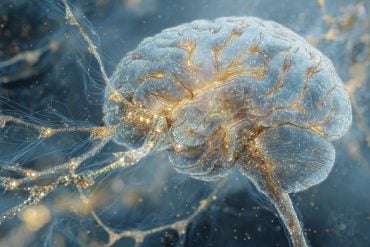Summary: Dopamine receptors in the ventral hippocampus play a critical role in balancing approach and avoidance behaviors, expanding understanding beyond dopamine’s known functions in reward and motivation. By studying D1 and D2 receptor-expressing neurons in mice, researchers found these receptors govern opposing emotional responses under stress.
Surprisingly, activating D2 receptor neurons reduced fear, suggesting a potential link to anxiety and mood regulation. These findings open new avenues for targeting dopamine circuits in treating anxiety, depression, and addiction.
Key Facts
- Dopamine in Emotions: D1 and D2 receptors in the ventral hippocampus regulate approach and avoidance behaviors under stress.
- Opposite Effects: D1 and D2 neurons mediate opposite responses, with D2 activation reducing fear in mice.
- Therapeutic Potential: The findings highlight dopamine’s overlooked role in emotional regulation and offer new insights for anxiety and mood disorder treatments.
Source: Mount Sinai Hospital
Mount Sinai researchers have discovered distinct roles for two dopamine receptors located on nerve cells within the portion of the brain that controls approach vs. avoidance behavior.
These receptors potentially influence anxiety and mood disorders whose origins are still unclear.

The team characterized the function of D1 and D2 dopamine receptors in the ventral hippocampus of mice, a region involved in the regulation of emotions and stress responses.
Their work expands the field’s knowledge of dopamine signaling beyond its well-known actions in other brain regions that influence reward and motivation, and sets the stage for future research into dopamine dysregulation in a range of anxiety and depressive disorders.
The results of the study appeared in the May 7 issue of Nature.
“Healthy and dysregulated emotional processing related to an individual’s ability to resolve conflict between approach and avoidance when making decisions on a moment-by-moment basis have long implicated the hippocampus,” says senior author Eric J. Nestler, MD, PhD, Nash Family Professor of Neuroscience and Director of The Friedman Brain Institute at the Icahn School of Medicine at Mount Sinai, and Chief Scientific Officer of the Mount Sinai Health System.
“Ours is the first comprehensive, functional study of newly discovered D1 and D2 expressing cells in the ventral hippocampus. We demonstrate that dopamine is more important in that area of the brain than previously believed and, moreover, that it conveys information related to decision-making under stressful conditions.”
The hippocampus coordinates decision-making in anxiety-inducing situations, like when an individual has to choose whether to obtain food or drink under threatening situations.
Such approach/avoidance dilemmas, where a particular goal has both desirable and potentially undesirable consequences, can cause excessive fear, confusion, and anxiety in humans.
The Mount Sinai team investigated the influence of dopamine signaling within the ventral hippocampus on approach/avoidance behavior in male mice. Researchers learned that D1 and D2 dopamine receptors expressed in different neuronal populations are called into play to help execute approach/avoidance decisions.
These receptors and the cells that express them mediate opposite approach/avoidance responses, and are differentially impacted by dopamine transmission in that region of the brain.
The team was surprised to learn that the neuronal cells that express D1 and D2 receptors, which are most highly enriched in the striatum—a critical part of the motor and reward system—are also relevant in the hippocampus.
Another unexpected behavioral observation was that mice whose D2 cells were artificially activated became much less fearful.
“These discoveries underscored for us that dopamine is an important component of the hippocampal circuitry and that dopamine signaling should be reconsidered in many brain regions where it was previously overlooked, especially those associated with learning, memory, and emotional behavior,” notes Dr. Nestler, whose considerable research over the years has been designed to better understand the molecular mechanisms of drug addiction and depression.
“Our work further implicates dopamine dysregulation in anxiety and mood disorders.”
Dr. Nestler credits the study’s two co-first authors, Arthur Godino, PhD, a graduate student and later postdoctoral fellow, and Marine Salery, PhD, a postdoctoral fellow, and the rest of the large research team for the creative advances made in this investigation.
The next step for Dr. Nestler and his team is to show precisely how the dopamine-hippocampus circuit that modulates approach/avoidance is dysregulated in several stress-related conditions, such as anxiety disorders and major depressive disorders (which involve increased avoidance) and in drug addiction (where individuals seek drug rewards despite harmful consequences).
“By helping to delineate the neuromodulatory circuits that govern these disorders,” says Dr. Nestler, “we’re taking an essential step toward addressing a leading cause of disability in humans worldwide.”
Funding: This work was funded by grants from the National Institute on Drug Abuse, National Institute of Mental Health, and Hope for Depression Research Foundation.
About this dopamine and anxiety research news
Author: Elizabeth Dowling
Source: Mount Sinai Hospital
Contact: Elizabeth Dowling – Mount Sinai Hospital
Image: The image is credited to Neuroscience News
Original Research: Closed access.
“Dopamine D1–D2 signalling in hippocampus arbitrates approach and avoidance” by Eric J. Nestler et al. Nature
Abstract
Dopamine D1–D2 signalling in hippocampus arbitrates approach and avoidance
The hippocampus, as well as dopamine circuits, coordinates decision-making in anxiety-eliciting situations.
Yet, little is known about how dopamine modulates hippocampal representations of emotionally salient stimuli to inform appropriate resolution of approach versus avoidance conflicts.
Here we studied dopaminoceptive neurons in the male mouse ventral hippocampus (vHipp), molecularly distinguished by their expression of dopamine D1 or D2 receptors.
We show that these neurons are transcriptionally distinct and topographically organized across vHipp subfields and cell types.
In the ventral subiculum where they are enriched, both D1 and D2 neurons are recruited during anxiogenic exploration, yet with distinct profiles related to investigation and behavioural selection.
In turn, they mediate opposite approach–avoidance responses, and are differentially modulated by dopaminergic transmission in that region.
Together, these results suggest that vHipp dopamine dynamics gate exploratory behaviours under contextual uncertainty, implicating dopaminoception in the complex computation engaged in the vHipp to govern emotional states.







